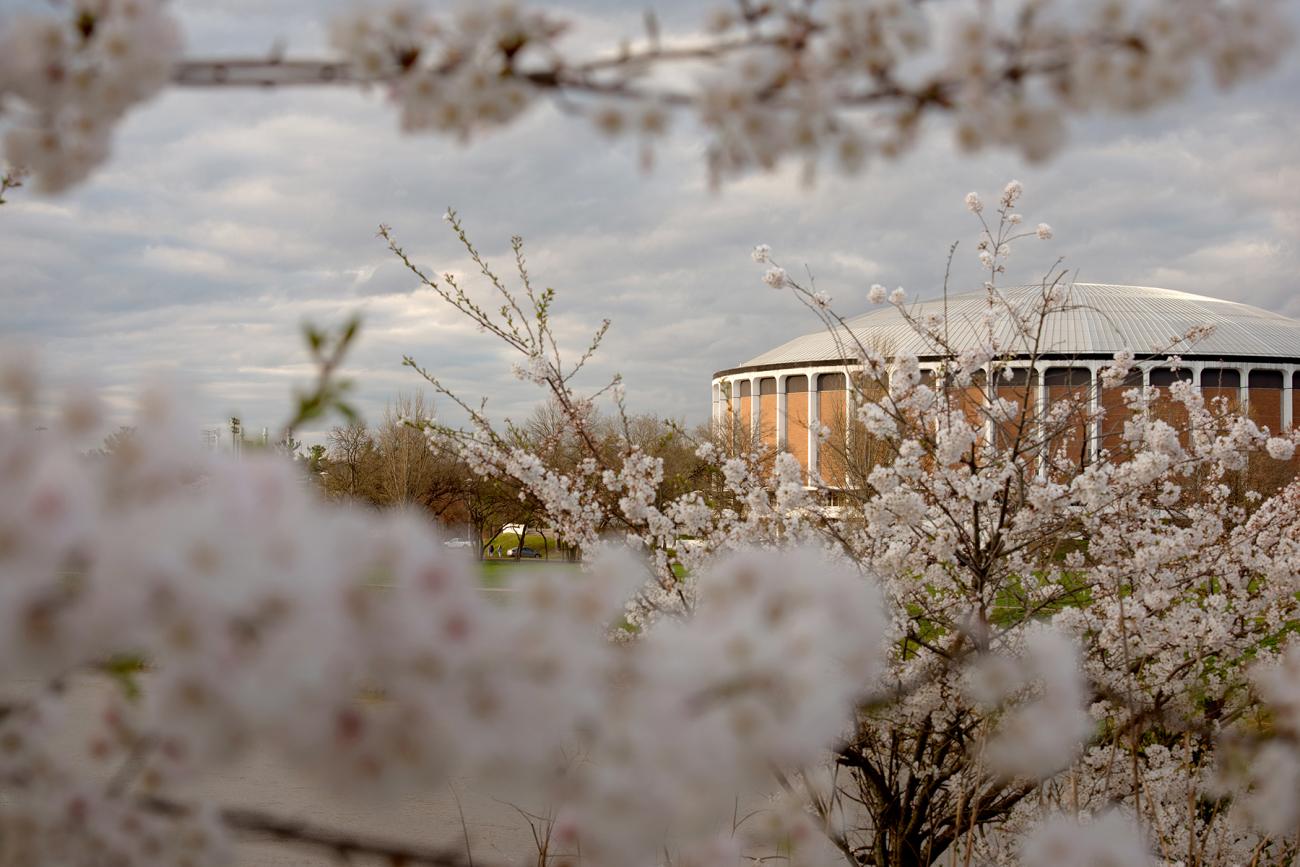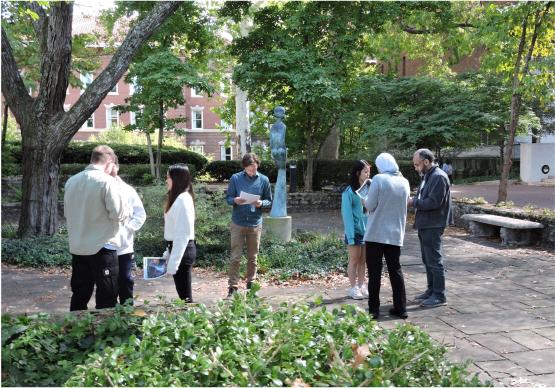
About Sustainable Grounds

Sustainable Grounds aims to create and maintain healthy, natural, biodiverse and beautiful landscapes that can act as the foundation for sustainability-oriented experiential or outdoor learning opportunities. The OHIO campus is a place of pride for our students, alums, staff, faculty, and community members. OHIO has been awarded Tree Campus Higher Education for the sixth consecutive year for its commitment to creating a campus that is both accessible and environmentally friendly. As an affiliate of the Bee Campus USA, OHIO strives to improve its landscapes for pollinators. Thanks to our Grounds and Sustainability departments' whose hard work has contributed immensely to these accolades.
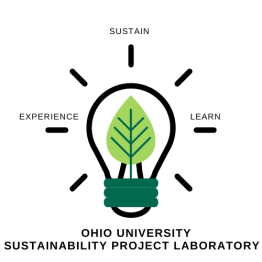
The Sustainability Project Laboratory is a database of sustainability-related project proposals. This resource hosts projects and project ideas that can be adopted by faculty, staff, and students for course projects, capstone or senior projects, theses, and more. Sustainability Project Laboratory Search "Grounds" in the Project Database search bar on the page to find projects related to the Grounds theme.
Data

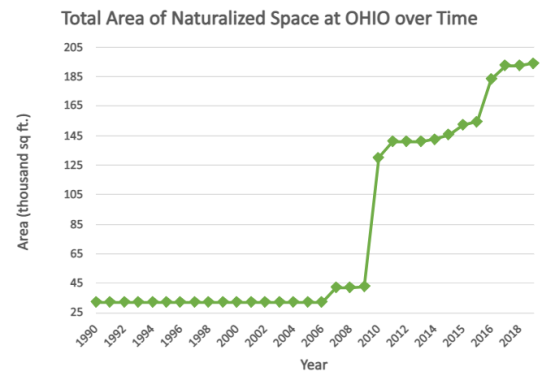

Comments and Responses on the Sustainability & Climate Action Plan: Grounds Section
| Do the strategies to reach the targets in this category of the draft 2021 OHIO Sustainability & Climate Action Plan seem appropriate to you? | Response |
|---|---|
| I would also like to propose increasing natural growth by residence halls. For example, promoting more native plants or pollinator gardens on the different greens that can grow freely and undisturbed. | Thank you for your comment, we are currently working on increasing naturalized areas and including pollinator specific areas. We will share your comment with Grounds regarding Res Life areas specifically |
| I think that a key missing piece here is community engagement and student involvement, especially within goal #1. As an undergraduate, I would love opportunities to work on naturalizing landscapes, creating pollinator habitats, and learning more about sustainable grounds maintenance options, as I'm sure other students would too. This could even be an opportunity for some classes to get outside with experiential learning, or to help students fulfill community service hours. There should also be clear signage at naturalized/pollinator sites to help explain to students that these are significant and innovative areas, not just unmaintained spaces. | Thank you for your comments. If you are not already a Climate & Sustainability Ambassador I recommend you join that group. Activities are being planned to work on Grounds, including removing invasive and installing pollinator habitats. The Plant Club is also working on the Baker Bed, the edible garden outside of Baker Center. The experiential learning piece in goal 1 will connect students to the community. Signage does exist on campus for intentional naturalized areas, and monarch waystations but signage could be improved and expanded. We also appreciate your suggestion to decrease mowing and will make sure it is a proposed strategy in implementation guide. Please note that river corridor is maintained by Hocking Conservancy District and all policies are under their jurisdiction. |
| Do the costs and benefits in this category of the draft 2021 OHIO Sustainability & Climate Action Plan seem appropriate for the goals? | Response |
|---|---|
| Staff time of goal #1 could be minimized by using student volunteers/classwork. Other benefits that should be added under goal #1 include biodiversity/local flora and fauna benefits and water/air/noise pollution reductions from reducing chemical/machine needs. |
Benefits will be added. |
| If you have additional comments on this category, please provide below. | Response |
|---|---|
| Birdhouses put around campus would be really cool and a unique thing. | Thank you for your comment. We do have bluebird boxes already in some locations and would like to add more! |
| Naturalized areas are excellent teaching and university reputation tools and should be employed far and wide. | Yes. |
| I think it would be in-line with already included goals to add a stipulation required that all plants and trees planted in university landscaping from this point on are native species. Goals including creating specific units/habitats for bats, birds, and bees should continue to be pursued. Another strategy for Goal 2 (which is already partly included in Goal 1) would be to simply reduce the number of grounds that need deliberate care and maintaining -- in other words, pursuing naturalization in all areas possible would be an incredibly effective way to reduce grounds-related emissions from the start. | Will discuss native species comment with Grounds, not sure 100% is attainable but that is policy of the department Naturalized areas continue to be developed. |
Ohio University Sustainability Plans
Grounds Graphics
Where we are now (2017): Progress Toward the 2011 Sustainability Plan
- Benchmark 13: Prohibit the installation of permanent irrigation systems that rely on potable water. Target met. Prohibition exists.
- Benchmark 17: Institute storm water management plan. Target met.
- Benchmark 26: Practice Integrated Pest Management (IPM). Target met. IPM Plan written and approved
Moving Forward: 2017 Sustainability & Climate Action Plan Goal #1
Goal 1: Create and maintain healthy, natural, biodiverse and beautiful landscapes that can act as the foundation for sustainability-oriented experiential learning opportunities.
- Increase percent of acres managed in accordance with the Integrated Pest Management (IPM) plan from 0% to 100%.
- Increase the square footage of naturalized/pollinator space from 193,000 ft 2 to 250,000 ft 2 . (Data provided by Susan Calhoun, Landscape Coordinator, Fall 2020.)
- Maintain the 7 of innovative sustainability grounds practices.
- Maintain the 572 acres of green space. (Data provided by Matt Trainer, Data & GIS Specialist, Voinovich School, Fall 2020)
Potential Strategies
- Develop and publish a Sustainable Tree and Landscape Management Plan
- Develop organic land care standard and determine acres managed in accordance with it
- Consider biodiversity in ecosystem management planning
- Maintain Baker Edible Garden, Child Development Center (CDC) Garden and green roofs
- Add bat and bluebird boxes in appropriate locations
- Implement Bee Campus USA Program
- Increase square feet of pollinator/naturalized areas
- Consider using goats for weed management
- Implement mini & micro-clover pilot programs
- Update Tree Care Standards in University Design & Construction Standards
- Maintain protected space on the Ridges
Benefits of Goal #1
- Increased community engagement
- Reduced emissions
- Increased positive reputation
Costs of Goal #1
- Staff time
- Operation and management costs
Moving Forward: 2017 Sustainability & Climate Action Plan Goal #2
Goal 2: Reduce carbon emissions from grounds-related activities from 18.04 metric tons of emitted carbon dioxide by 20% of the FY21 baseline.
Potential Strategies
- Reduce fertilizer use
- Offer continuing education for Grounds staff
- Develop no-idle policies that are appropriate for Grounds staff
Benefits of Goal #2
- Operations and management savings
- Reduced emissions
Costs of Goal #2
- Capital expenses
- Operation and management costs
Initiatives
Hub Supported Initiatives
Schoonover Green Roof Project
Installed in July, 2020, during the COVID-19 pandemic, the Schoonover Center green roof was a bright spot in an otherwise challenging summer. The roof will not only provide viewing pleasures for students, staff and faculty, but will be used for research by many colleges and departments across the University.
Bee Campus USA
In April, 2021, Ohio University's application was approved for the Bee Campus USA designation!
Sapling Scavenger Hunt
University students pair up with Child Development Center preschoolers to follow a map in search of seven different trees at the Ridges to educate early childhood students on the importance of trees and how they are identified.
Storm Water Management
Implementing and continuing practices in line with our US EPA storm water permit.
Tree Advisory Committee
Quarterly meetings to discuss campus tree care and provide support to the Grounds Department in their planning for, education and maintenance of campus trees.
Hub Related Initiatives
Green Infrastructure Tour
This tour takes you throughout the Ohio University campus and the Athens community to explore the many green roofs and other green infrastructure sites the town has to offer. Green infrastructure is a design strategy for reducing stormwater runoff. Along with the Schoonover green roof, some of the other green infrastructure on campus includes the Patton Hall green roof, the Jefferson Hall green roof, and rain gardens along Union St. and at The Ridges.
Schoonover Green Roof Story Map
The Schoonover green roof is a research installation that stores rainwater in soil and plants, reducing discharge. Therefore, less rooftop water from Schoonover will discharge to the storm sewer and ultimately the Hocking River. Learn more about this project by exploring the rest of this Storymap!
Integrated Pest Management
A practice that emphasizes the growth of a healthy crop or lawn with the least possible disruption to ecosystems and encourages natural pest control mechanisms.
The Ohio University Integrated Pest Management Plan was adopted on July 16, 2019.
Naturalized Areas & Wildlife Habitats
Have you noticed areas like this on our campuses? Don't worry, the groundskeepers didn't forget to mow. Ohio University is intentionally leaving sections of campus to grow naturally to protect biodiversity and pollinator species, to reduce greenhouse gas emissions from grounds equipment, and to enhance the natural beauty of our green campus.
Certified Monarch Waystations
Sites that provide monarch butterflies with what they need to sustain migration across North America.
Battery operated tool initiative
Approximately 75% of the small equipment inventory used in the Grounds Department is battery-operated. This equipment consists of push mowers, blowers, hedge trimmers, and weed-eaters. The advantages of producing little to no noise or emissions on-site not only creates environmental and direct human health benefits, but also boosts productivity and efficiency by allowing essential work to be performed at any hour without class-room disruption. Electric vehicles (ATV's) are being examined in an effort to replace diesel units.
Bluebird Trail
Ohio University has a Bluebird Trail. Bluebird boxes are placed in strategic locations around campus. Locations are shown on the map below.
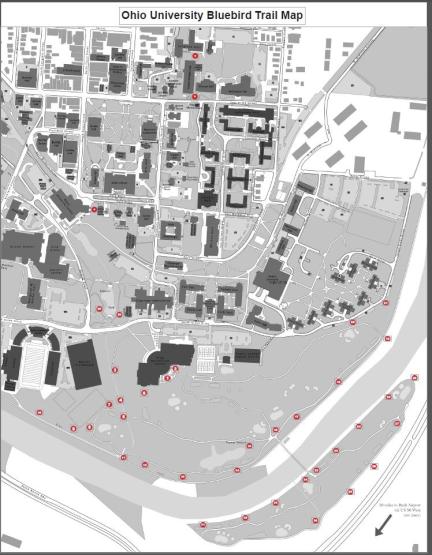
Storm Drain Marking
Urban and rural communities often rely on storm drains to carry rain and snowmelt to larger waterways. Unlike household water systems, storm sewers flow directly into our local waters, depositing whatever they pick up along the way. Marking storm drains can raise awareness about the connection between storm drains and receiving waters and can help to deter littering, excess fertilizer use, dumping, and other practices that contribute to storm water pollution. At Ohio University, we mark our storm drains with the markers shown below and track the marked storm drains in a GIS system.
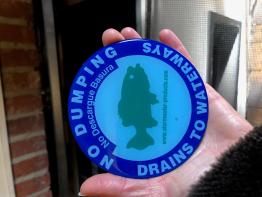
Tree Campus Higher Education
Ohio University's Athens Campus is a Tree Campus Higher Education
Ohio University Grounds Department, with support from the Office of Sustainability, received the Tree Campus Higher Education designation by the Arbor Day Foundation for the fifth year in a row. Ohio University was honored for the sixth consecutive year with the 2021 Tree Campus Higher Education recognition for the University’s commitment to campus forest management. The University has received the designation annually since 2016.

The following pages provide supplementary details regarding Ohio University's progress in fulfilling the Arbor Day Foundation's five standards for application completion:
Jump to Section
- Standard 1 - Campus Tree Advisory Committee
- Standard 2 - Campus Tree Care Plan
- Standard 3 - Campus Tree Program with Dedicated Annual Expenditures
- Standard 4 - Arbor Day Observance
- Standard 5 - Service Learning Project
Standard 1: Ohio University Tree Advisory Committee
(est. July 28, 2015)
The mission and purpose of the Ohio University Tree Advisory Committee centers upon five roles:
- Providing support to the Grounds Department in their planning for, education about and maintenance of campus trees. This can take the form of research, reporting, advocacy or fundraising, as appropriate or desired by the Landscape Coordinator.
- Development of community-wide programming and outreach that illustrates that campus trees create connectivity to the community. This is to be accomplished through Arbor Day event planning (can be held on Arbor Day or throughout the year, as appropriate for the academic calendar).
- Updating, publishing and advocating for the implementation of the Campus Tree Care Plan.
- Managing annual service learning projects and academic coursework to provide an opportunity to engage the student population with campus trees. Projects should follow the criteria established by the Tree Campus Higher Education Standards through the Arbor Day Foundation.
- Coordination of the annual submission of resources for certification as a Tree Campus Higher Education.
The Ohio University Tree Advisory Committee therefore seeks to contribute to environmental well-being and the achievement of a more sustainable future through conservation of campus trees. In carrying out these roles, the Ohio University Tree Advisory Committee will communicate and partner with the Ohio University and Athens communities to raise awareness of positive and negative efforts that respectively promote or deter the health of campus trees and associated canopy cover.
Ohio University Tree Advisory Committee Composition
In accordance with requirements established by the Arbor Day Foundation's Tree Campus Higher Education program, this committee must include, at minimum, a representative from each of the following campus constituencies:
- Office of Sustainability (any member of the full-time staff)
- Landscape Coordinator (as a representative of Facilities Management)
- Student (undergraduate or graduate)
- Faculty
- Community (preferably Regional Urban Forester with ODNR's Division of Forestry)
- Additional members or guests as deemed appropriate
Membership Roster, 2025:
- Susan Calhoun, Community Representative
- Tamra Ansel, Project Manager, Design & Construction
- James Dyer, Professor, Department of Geography
- Kathleen Shuttleworth, student representative
- Lauren Wloszek-Therens, student representative
- O Ryan Gassaway, Arborist
- Travis Post, Assistant Director of Campus Grounds
- Sam Crowl, Director of Sustainability

Standard 2: Tree Care Plan
Ohio University Campus Tree Care Plan is available in PDF format.
Ohio University Campus Tree and Landscape Care Procedures
Latest Version Established March 13, 2024
The purpose of the Campus Tree and Landscape Care Procedure is to:
- Protect the campus canopy cover by ensuring that decisions involving the removal of all trees on campus are given proper consideration and to ensure tree replacement as a priority.
- Protect campus trees by mitigating the impact of development and construction with regard to campus trees as well as to promote tree health through maintenance practices that follow the International Society of Arboriculture's best management practices.
- Provide the Ohio University Tree Advisory Committee with the approved Ohio University Grounds Services tree care procedures on campus.
The responsibility of enacting the Campus Tree and Landscape Care Procedures rests with Ohio University's Grounds Services, a division of Ohio University Facilities Management and Safety, with financial and supervisory support from Facilities Management and Safety.
The Campus Tree and Landscape Care Plan includes detailed criteria for the following categories:
- Sustainable Landscape Management
- Landscape Materials Management
- Soil Management:
- Fertilizer and Herbicides
- Ice-Melt/Salt application
- Mowing
- Watering
- Tree Planting and Selection
- Mulching
- Current Architecture, Design and Construction Tree Protection Standards
- Proposed Additional Tree Protection and Preservation Policies and Procedures
- Activities to Avoid in the Care of Mature Trees
- Hazard and Emergency Tree Removal
- Managing for Catastrophic Events
- Design Standards
- Communication Strategy
- Terminology
See the full version of the Tree Care Plan in PDF format.
Standard 3: Campus Tree Program with Dedicated Annual Expenditures
A college campus, to be designated a Tree Campus Higher Education, must allocate finances for its annual campus tree program. Evidence should be shown that an annual work plan has been established and expenditures dedicated towards that work plan.
It is suggested, but not mandatory, that campuses work towards an annual expenditure of $3 per full-time enrolled student. Ohio University tracks its spending in relation to tree purchased, labor, equipment, supplies for tree plants, maintenance and removal, and value of volunteer labor.
Standard 4: Arbor Day Observance
2024 Events:
On April 23, 2024, Ohio University hosted a virtual joint Earth Day/Arbor Day Celebration.
To celebrate Arbor Day in recent years, the Office of Sustainability has placed boxes of free oak tree saplings at various locations on campus, throughout the City of Athens, and in Chauncey and The Plains. The boxes are available from 10 a.m. to 5 p.m. and residents pick up dozens of saplings. Instructions for planting and caring for the saplings are included.
For more information about virtual celebrations during COVID, check out this OHIO News story.
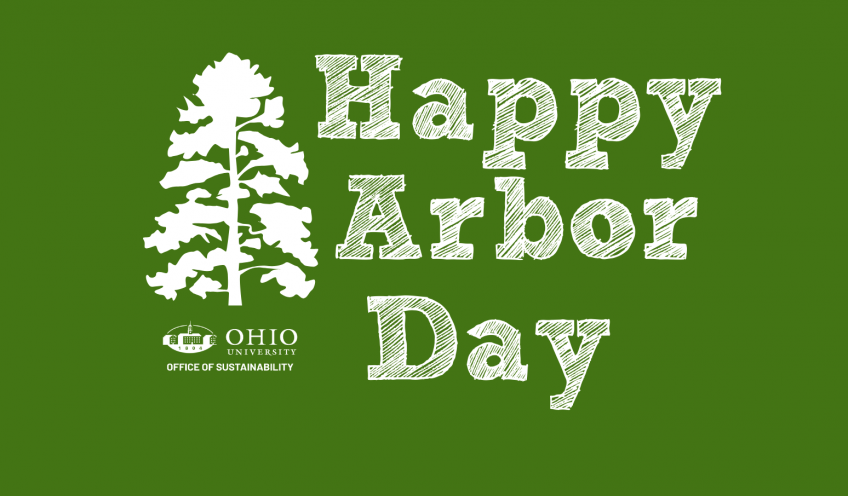
2019 Arbor Day Celebrations:
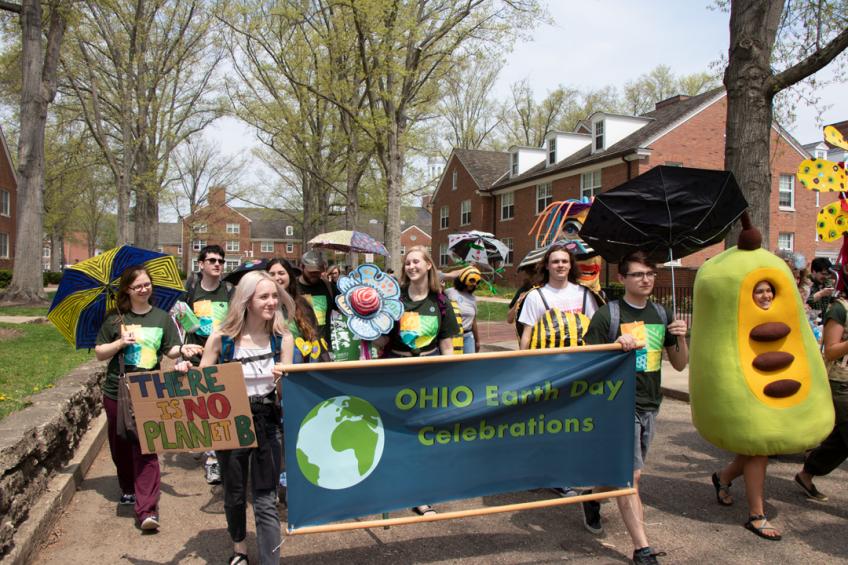
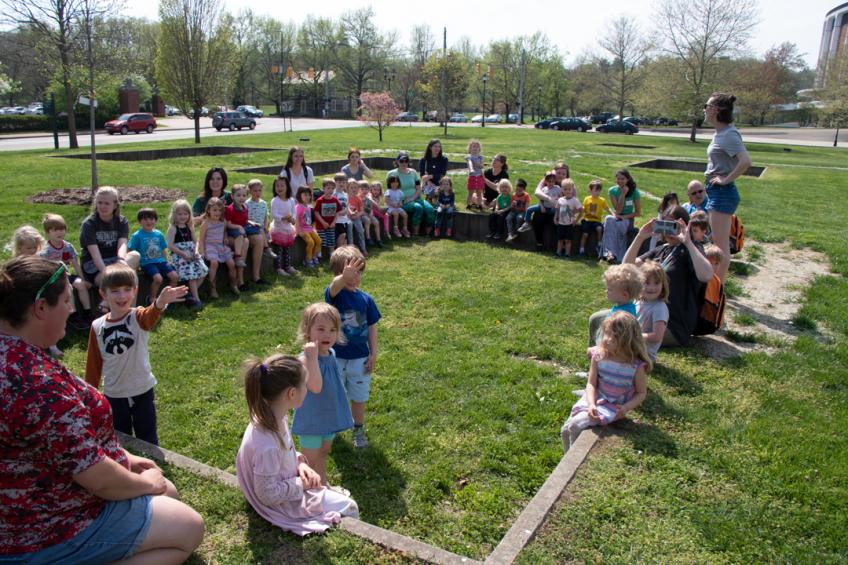

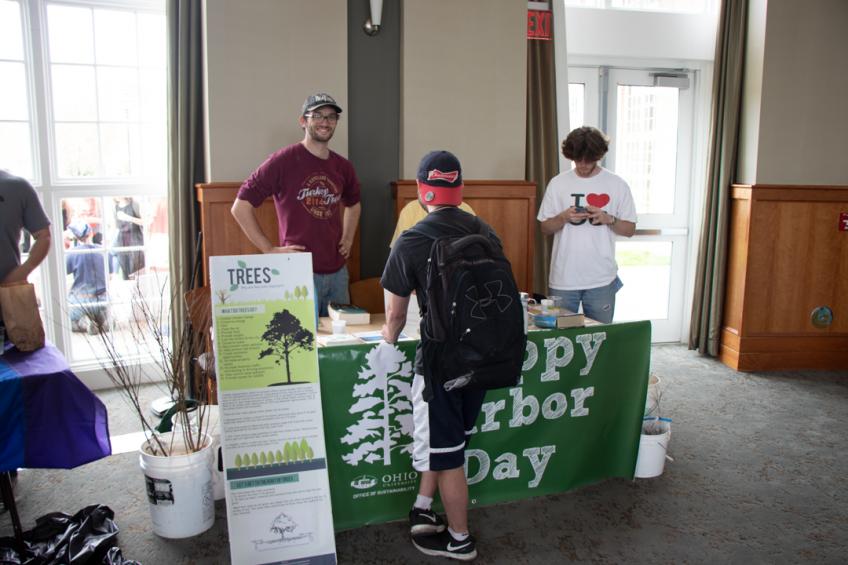
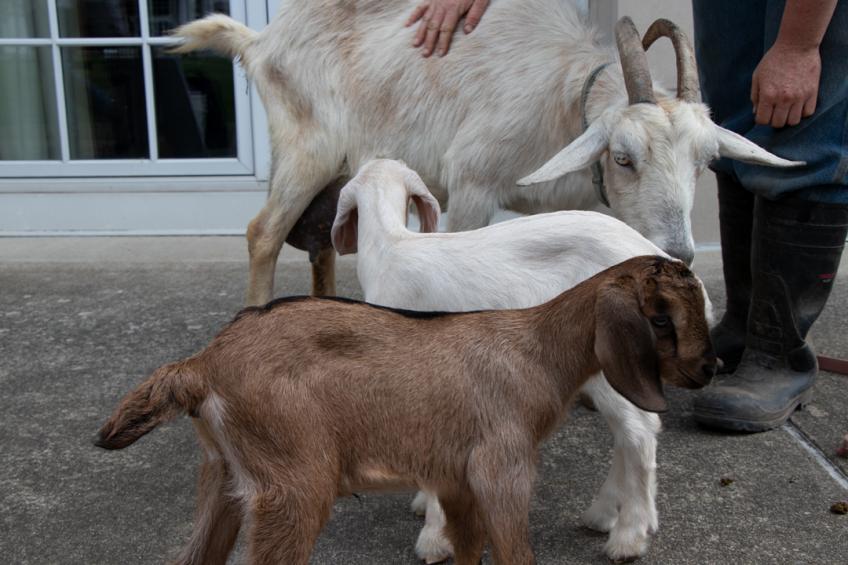
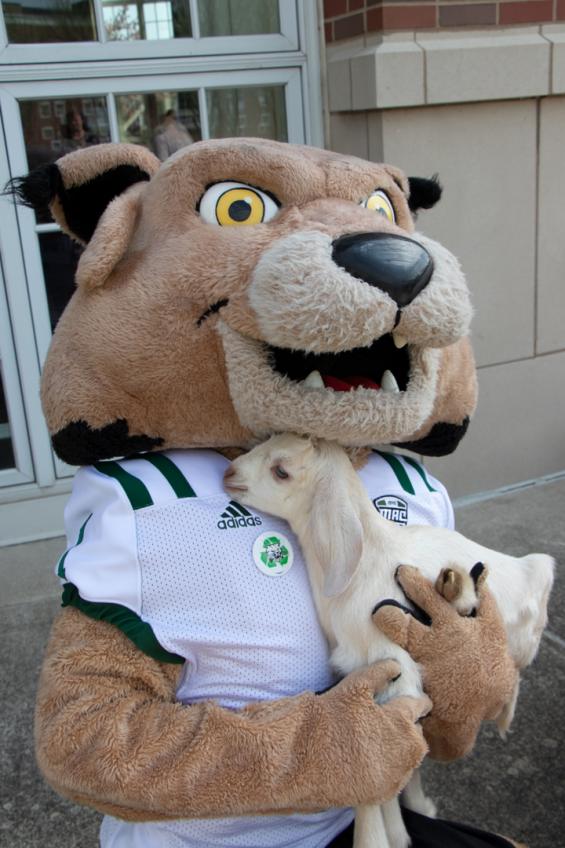
Standard Five-Service Learning Projects
According to the Arbor Day Foundation, "The Service Learning Project should be an outreach of the spirit of the Tree Campus Higher Education initiative. This project should provide an opportunity to engage the student population with projects related to trees and can be part of a campus or community initiative."
For the third year in a row, Ohio University hosted a 'Sapling Scavenger Hunt.' Graduate and undergraduate students paired up with preschoolers and staff from the Patton College of Education Child Development Center to follow a map in search of seven different trees. The map, created by the Facilities Management GIS team, led students to trees with a variety of shapes, colors, and scents, using leaves, bark, and fruits as identifying features. The selected trees included Umbrella Magnolia, Dawn Redwood, Sweetgum, Redbud, Sycamore, Tulip Poplar, and Black Walnut.
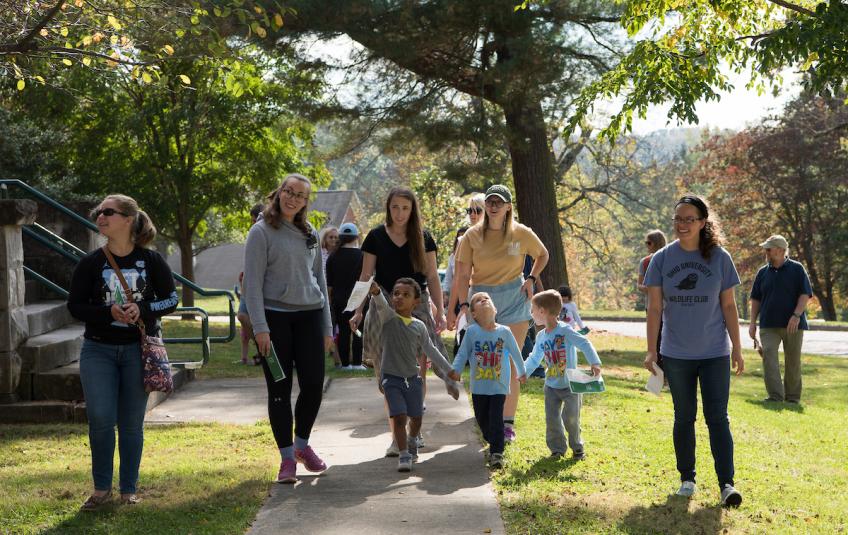
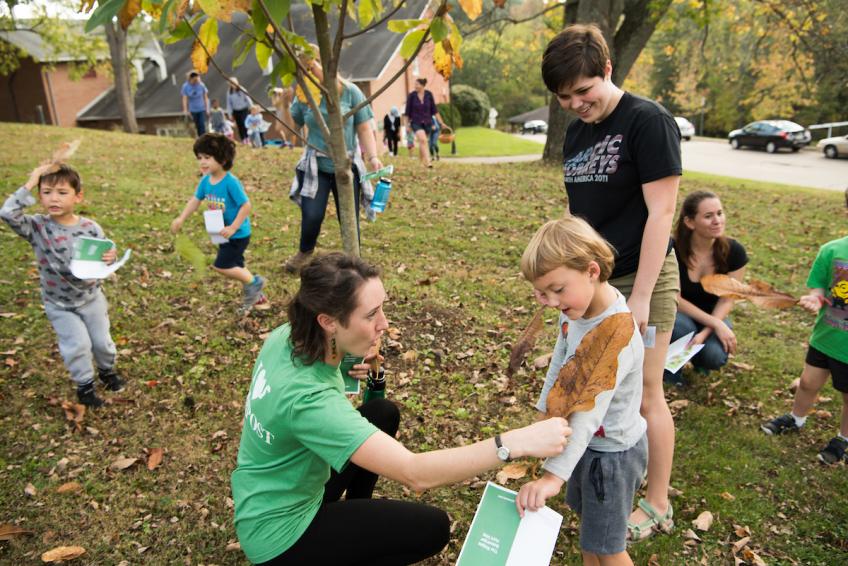

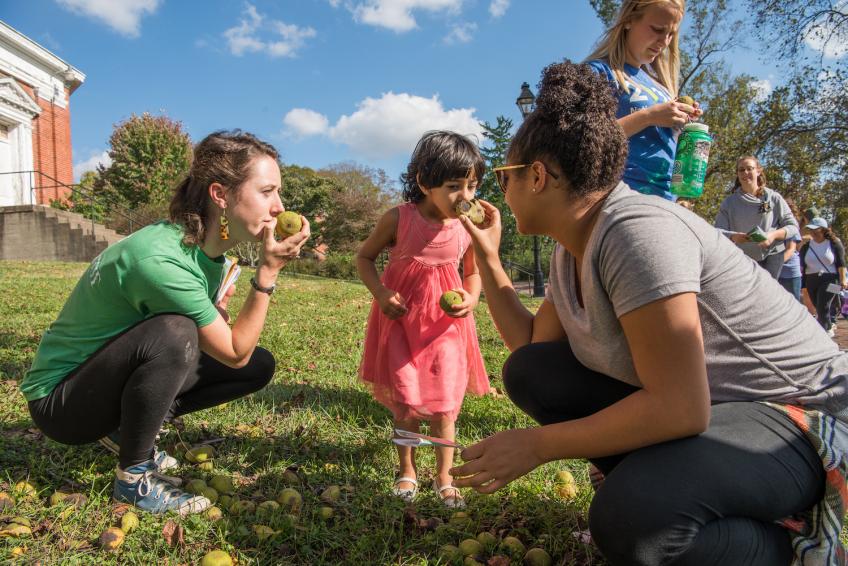
Ohio University Experts on Grounds
Experts on Grounds
| Name | Contact | Description |
|---|---|---|
|
Kyle Butler
|
butlerk@ohio.edu | Sustainable Living Hub Coordinator |
|
Susan Calhoun
|
calhouns@ohio.edu | Landscape Coordinator |
|
Brad Jokisch
|
jokisch@ohio.edu | Cultural/political ecology; agriculture |
|
Brian McCarthy
|
mccarthy@ohio.edu | Eastern deciduous forest ecology |
|
David Rosenthal
|
rosentha@ohio.edu | Ecological genetics; invasion biology; physiological ecology; global change |
|
Gaurav Sinha
|
sinhag@ohio.edu | Environmental data modeling; landscape analysis; PPGIS |
|
Glenn Matlack
|
matlack@ohio.edu | Forest conservation and management |
|
James Dyer
|
dyer@ohio.edu | Biogeography; landscape ecology; forest dynamics |
|
James Lein
|
lein@ohio.edu | Application of GIS to land resource analysis/sustainability issues |
|
Jared DeForest
|
deforest@ohio.edu | Soil science; ecosystem ecology; microbial ecology; forestry |
|
Rebecca Snell
|
snell@ohio.edu | Forest ecology, landscape ecology, global change |
|
Rob Wiley
|
wileyr@ohio.edu | Landscape ecology, soil and wetlands |
|
Viorel Popescu
|
popescu@ohio.edu | Conservation biology |
|
Willem Roosenburg
|
roosenbu@ohio.edu | Conservation biology; restoration ecology |
|
Sam Crowl
|
crowls1@ohio.edu | Associate Director of Sustainability |

